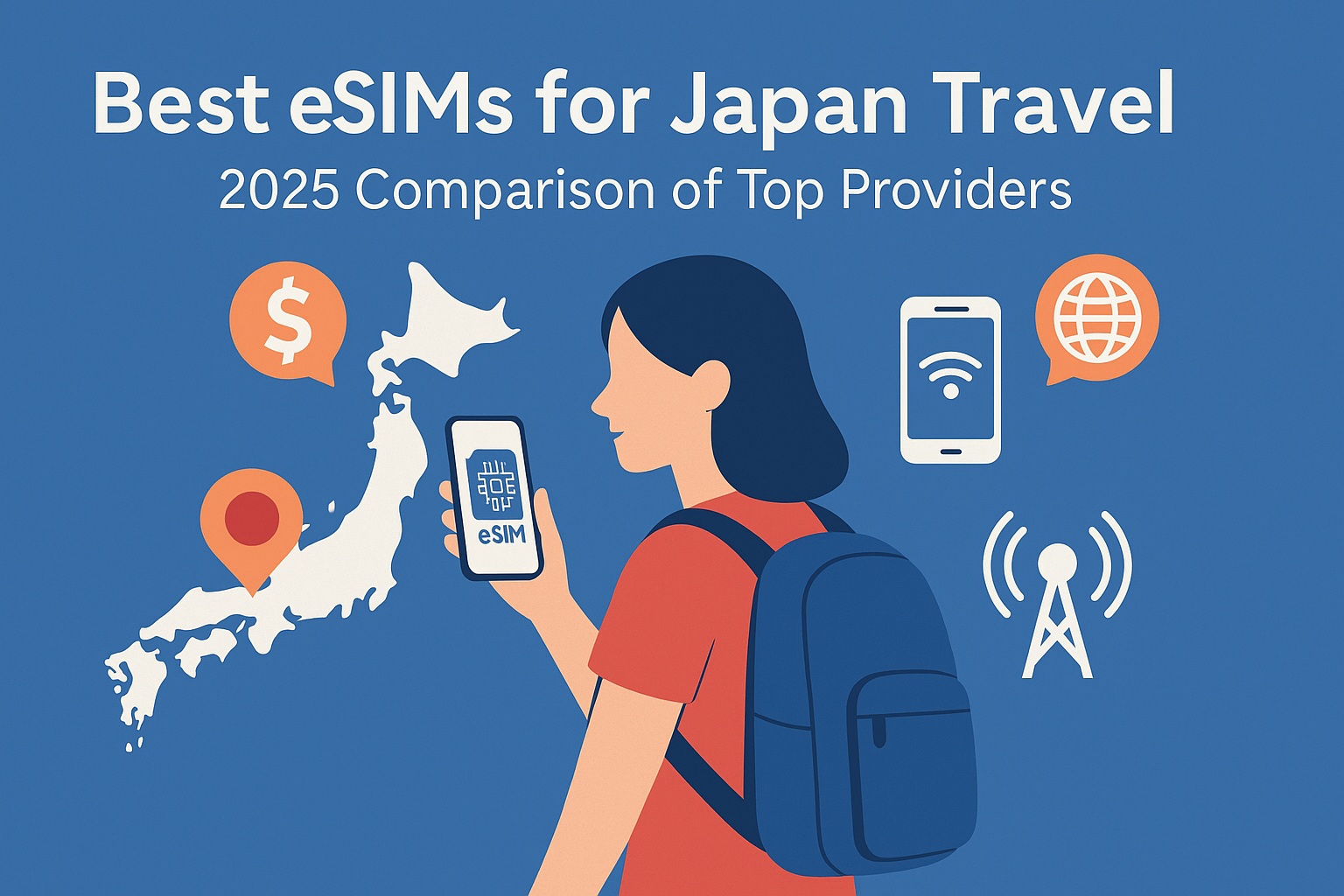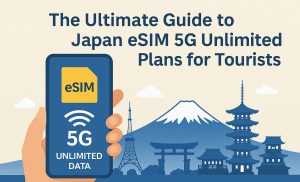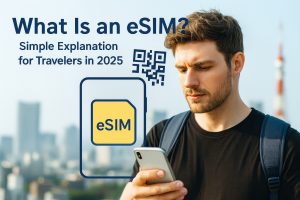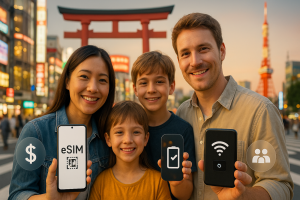Planning a Japan trip in 2025? This guide compares leading Japan eSIM providers—Japan Wireless, Saily, and Ubigi—so you can pick the right data plan for maps, messaging, and streaming. We highlight price, coverage on Japan’s major networks, 4G and 5G speeds, hotspot use, support quality, refund policies, and tips for first-time eSIM users.
What is an eSIM and Why Use One in Japan?
An eSIM (embedded SIM) is a digital version of the traditional SIM card. Instead of buying and inserting a plastic SIM, you can activate a plan on your phone by scanning a QR code or downloading a digital profile. Most modern smartphones, including recent iPhones, Samsung Galaxy, and Google Pixel models, support eSIM technology.
For travelers visiting Japan, an eSIM offers several benefits over physical SIM cards or pocket Wi-Fi rentals:
- No need to swap SIM cards. You can keep your home number active for calls or SMS, while your Japan eSIM handles local data.
- Instant activation. Buy your plan online, scan the QR code, and be connected within minutes. No waiting in line at airport counters.
- Affordable local rates. Roaming charges from overseas carriers can be extremely high. eSIMs provide access to Japanese carrier networks at much lower prepaid rates.
- Hotspot tethering. Most eSIMs let you share your connection with friends or laptops, turning your phone into a Wi-Fi hub.
- Great for short stays. Whether you’re in Japan for 5, 10, or 30 days, you can choose a plan that exactly matches your trip length.
Imagine landing at Narita or Haneda Airport, switching off airplane mode, and instantly seeing your phone connect to Japan’s fastest networks. No paperwork, no vending machine SIMs, no stress. That’s the convenience eSIMs bring.
2025 Japan eSIM Comparison at a Glance
Three providers dominate the market for Japan eSIMs: Japan Wireless, Saily, and Ubigi. Each connects to strong Japanese carrier networks and offers both fixed and unlimited data options. The differences come down to coverage, customer service, plan flexibility, and refund policies.
- Japan Wireless uses both KDDI au and NTT Docomo networks, which cover nearly the entire country, including cities, rural towns, and even train routes. This dual-network setup makes it the most reliable choice. Plans include both unlimited (with daily high-speed allowances) and fixed data options. Support is available by phone and email, in English and Japanese. Travelers also appreciate the optional insurance policy that guarantees a refund if the eSIM fails.
- Saily is a global eSIM brand created by NordVPN. In Japan, it connects to the KDDI au network, known for excellent coverage in urban areas and high-speed trains. Saily is app-based, offering easy plan management and low-cost small data packages (like 1 GB for a few dollars). Its unlimited plan has no daily throttling, which appeals to heavy users. Support is provided through in-app live chat, available 24/7, though it can sometimes be slower than phone-based help.
- Ubigi is owned by an NTT Docomo subsidiary and runs entirely on NTT Docomo’s network, Japan’s largest carrier. This makes it especially strong in rural areas. Ubigi offers a wide variety of plans, from 500 MB for a day to 50 GB or even year-long options. Their unlimited plan is pricier than others, but it provides continuous high-speed data without daily caps. Support is mostly through FAQs and email, with no real-time phone assistance, making it less beginner-friendly.
While all three are solid choices, Japan Wireless stands out for combining local reliability, affordable pricing, and strong support, making it the most traveler-friendly of the group.
How to Choose the Best Japan eSIM
When choosing the right eSIM for Japan, consider the following factors:
Coverage and Network Quality
Japan has three major mobile carriers: NTT Docomo, KDDI au, and SoftBank. Docomo is known for having the broadest nationwide reach, while KDDI offers nearly equal coverage. For travelers sticking to major cities like Tokyo, Osaka, and Kyoto, any network will do. But if you plan to explore rural areas, mountains, or islands, having Docomo or KDDI coverage is essential. Japan Wireless covers both, making it the most reliable. Saily relies only on KDDI, and Ubigi only on Docomo.
Data Speed and Fair Usage
“Unlimited” plans often come with a daily high-speed cap. For example, some unlimited plans allow 3 GB of full-speed data per day, after which speeds are reduced until the next day. At reduced speeds, you can still use maps, social media, and messaging apps, but streaming HD video or uploading large files may be difficult. If you need continuous high-speed data, check for premium plans without daily throttles. Fixed data plans are cheaper but stop working once the allowance is used.
Hotspot and Tethering
If you plan to share your connection with friends or use it on a laptop, make sure your eSIM allows hotspot use. Japan Wireless, Saily, and Ubigi all permit tethering, but some smaller providers restrict it. Families traveling together often find it cheaper to buy one unlimited eSIM and share via hotspot.
Ease of Setup and Compatibility
Most eSIMs can be installed before departure, so your phone connects immediately upon landing in Japan. If you’re not comfortable with apps, Japan Wireless and Ubigi offer simple QR code activation via email. Saily is app-based, which some users love but others may find less intuitive. Before buying, always check if your phone supports eSIM.
Customer Support
Support matters most if something goes wrong. Japan Wireless offers direct phone and email support in English and Japanese. Saily provides 24/7 live chat in multiple languages. Ubigi relies on self-help FAQs and email, which may not be ideal if you need urgent help upon arrival.
Refund Policies
Japan Wireless uniquely offers optional insurance: if your eSIM doesn’t work, you get a full refund. Saily refunds unused plans if not activated, and may grant partial refunds in special cases. Ubigi generally does not provide refunds once activated. For peace of mind, Japan Wireless is the safest choice.
Provider Deep Dives
Japan Wireless eSIM
Japan Wireless is a Japan-based provider dedicated to inbound tourists. Its biggest strength is reliability: by combining NTT Docomo and KDDI au networks, it ensures coverage almost everywhere. Even on shinkansen bullet trains or in smaller towns, you’re unlikely to lose signal.
Plan Variety: Travelers can choose between unlimited daily-use plans or fixed data packages. Unlimited plans typically offer 3 GB of full-speed data per day, resetting at midnight. For light users, fixed data plans such as 5 GB or 10 GB provide cheaper options. A premium unlimited plan with no daily throttle is available for those who want uninterrupted 5G speeds.
Affordability: Prices are competitive. A 15-day unlimited plan costs around the same as renting a pocket Wi-Fi, but with no need to carry extra devices or worry about battery life. Fixed data plans are even cheaper, perfect for short trips or light users.
Hotspot Sharing: Tethering is allowed, so one eSIM can cover multiple devices. Families or couples often use this feature to save money.
Support: Japan Wireless offers local customer support via phone and email, with multilingual staff. Having someone in Japan to call if you can’t get connected is a huge reassurance for first-time eSIM users.
Refund Guarantee: With optional insurance, you’re entitled to a full refund if the eSIM doesn’t work on your device. This level of guarantee is rare in the eSIM market.
Overall, Japan Wireless combines local expertise, traveler-friendly pricing, and excellent support. It’s the best all-around choice for inbound tourists in 2025.
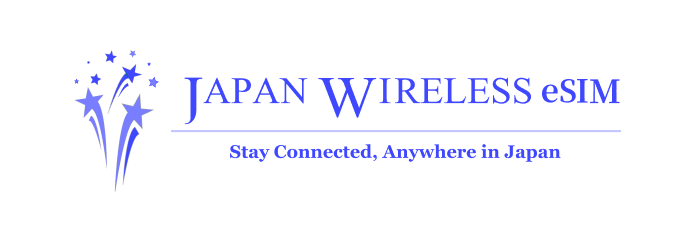
Saily eSIM
Saily is a global eSIM provider launched by the team behind NordVPN. In Japan, it connects to the KDDI au network, providing strong coverage in cities and good performance on shinkansen routes.
Plan Options: Saily offers very cheap small-data packages, starting at 1 GB for just a few dollars. For budget travelers who only need maps and messaging, this is a great option. It also offers unlimited plans with no daily throttle, making it attractive for heavy users.
App-Centric Experience: Everything is managed through the Saily app, from purchasing plans to checking usage. The app includes extra features like ad blocking and VPN integration, appealing to security-conscious users.
Hotspot Sharing: Saily supports unlimited tethering, so you can share data with laptops or other phones.
Support: Available 24/7 via in-app live chat, in multiple languages. While convenient, chat-based support may not be as fast or personal as Japan Wireless’s phone support.
Refunds: Saily offers full refunds if the plan hasn’t been activated, and partial refunds in certain cases. Once activated and used, refunds are unlikely.
In summary, Saily is best for budget-conscious travelers or tech-savvy users who want flexibility and global coverage. It’s especially appealing if you plan to travel to multiple countries, since the same app can handle other destinations. However, it lacks the local support and refund guarantee of Japan Wireless.
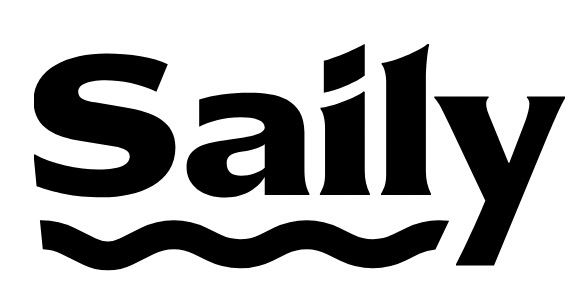
Ubigi eSIM
Ubigi is operated by Transatel, a subsidiary of NTT Docomo, Japan’s largest carrier. As such, it runs exclusively on Docomo’s network, offering the broadest nationwide coverage.
Plan Options: Ubigi has a wide variety of packages. At the low end, you can buy 500 MB for a single day. At the high end, they offer 50 GB plans or even year-long packages for long-term travelers. Their unlimited plan is more expensive than Japan Wireless or Saily, but it offers continuous high-speed data with no daily limits.
Coverage Strength: For travelers going off the beaten path—rural villages, mountain regions, or remote islands—Ubigi may provide the most consistent coverage thanks to Docomo’s network dominance.
Ease of Use: Plans can be purchased on their website or app, with activation via QR code. Setup is straightforward, and you can pre-install before arrival.
Support: Ubigi mainly relies on FAQs and email support. There is no live chat or phone hotline, which can be inconvenient if you run into issues.
Refunds: Ubigi generally does not provide refunds once a plan is activated, so it’s best to buy a small plan first to test.
Ubigi is a strong choice for long-term travelers or those heading to rural areas where Docomo coverage is superior. For most tourists, however, the higher cost and limited support make it less appealing compared to Japan Wireless.
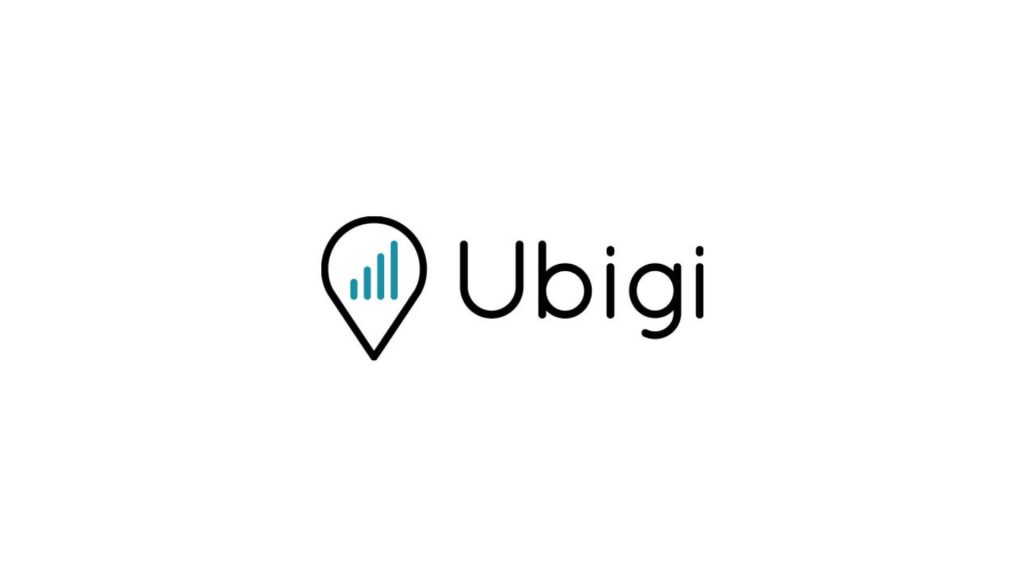
Why Choose Japan Wireless eSIM?
Here are the top reasons Japan Wireless is the best eSIM for inbound travelers to Japan:
- Affordable local pricing.
- Coverage on both NTT Docomo and KDDI au networks.
- Choice between unlimited and fixed data plans.
- Hotspot and tethering allowed.
- Multilingual customer support, including phone assistance.
- Optional refund insurance for peace of mind.
- Trusted brand with years of experience serving tourists.
How to Choose a Japan Wireless eSIM Plan (Unlimited vs Fixed)
When selecting a Japan Wireless plan, consider your data usage:
- Unlimited Plan: Best for heavy users, video streamers, or those who share via hotspot. You get 3 GB of high-speed data per day, then reduced speeds until midnight. A premium unlimited option provides continuous 5G with no throttling.
- Fixed Data Plan: Best for light users who mostly need maps, translation, and messaging. A 5 GB or 10 GB plan may be sufficient for a week or more, at a lower cost.
As a rule of thumb, 1 GB supports around 1,000 minutes of navigation, 10 hours of web browsing, or several hundred social media posts. If you plan to stream video, choose unlimited. If you only need basic connectivity, fixed data is fine.
Final Recommendation
All three providers—Japan Wireless, Saily, and Ubigi—offer good Japan eSIM services. But for most travelers, Japan Wireless eSIM is the best all-around choice.
It provides the strongest combination of coverage, pricing, support, and peace of mind. By offering access to both Docomo and KDDI networks, multilingual customer support, flexible plan options, and a unique refund guarantee, Japan Wireless stands out as the most traveler-friendly eSIM for Japan in 2025.
If you want to stay connected seamlessly throughout your Japan trip, from Tokyo’s neon streets to rural shrines and hot spring towns, Japan Wireless is the option we recommend.

